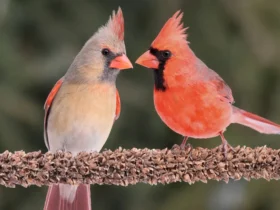In the tropical rainforests of Central America, a remarkable bird captures the attention of both researchers and nature enthusiasts with its striking appearance and captivating behaviors. Meet the Montezuma Oropendola (Psarocolius montezuma), a species known for its elaborate nests, distinct calls, and vibrant plumage. In this article, we will embark on a journey into the world of the Montezuma Oropendola, exploring its unique characteristics, ecological significance, and the wonder it brings to the rainforest canopy.
Montezuma Oropendola images
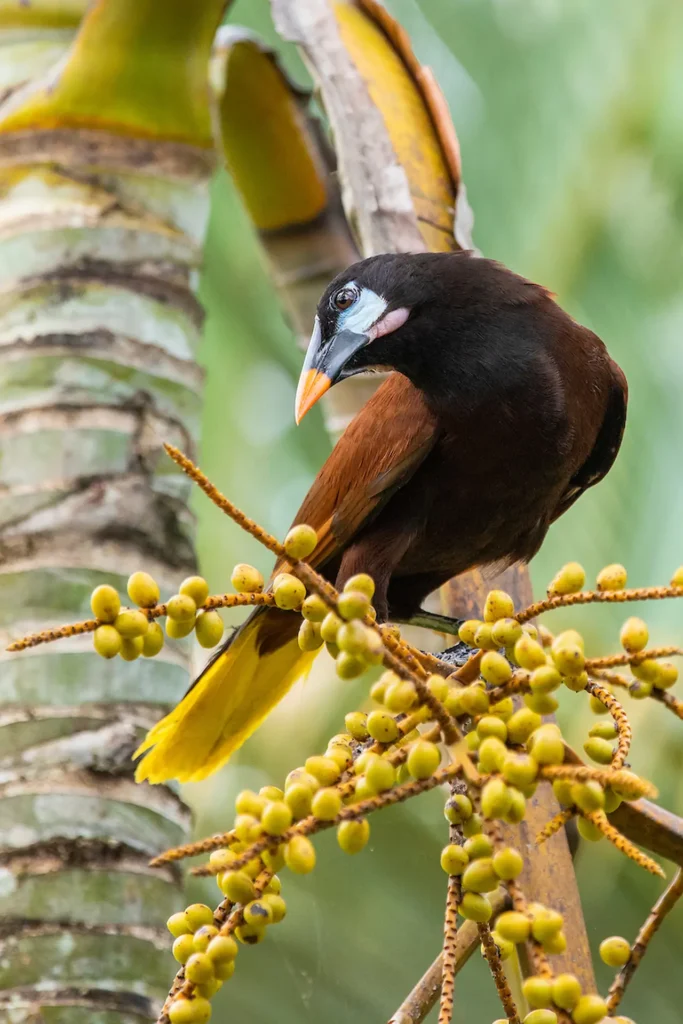
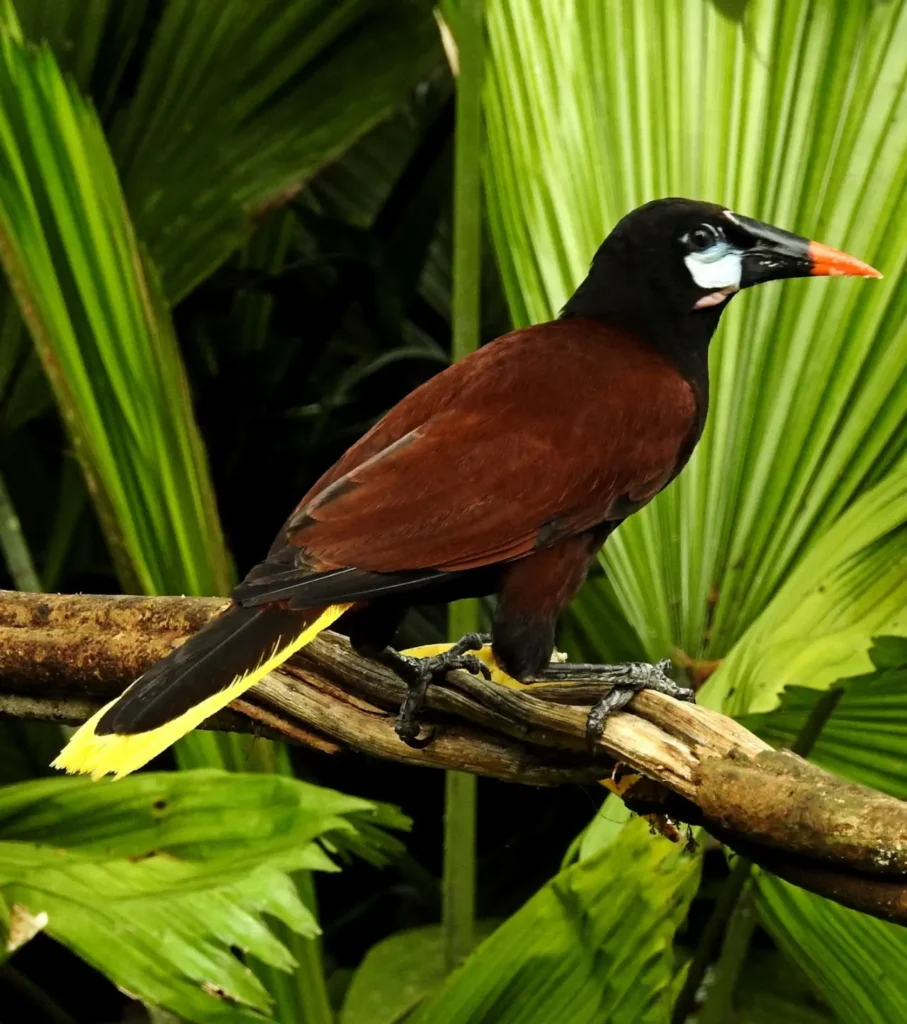
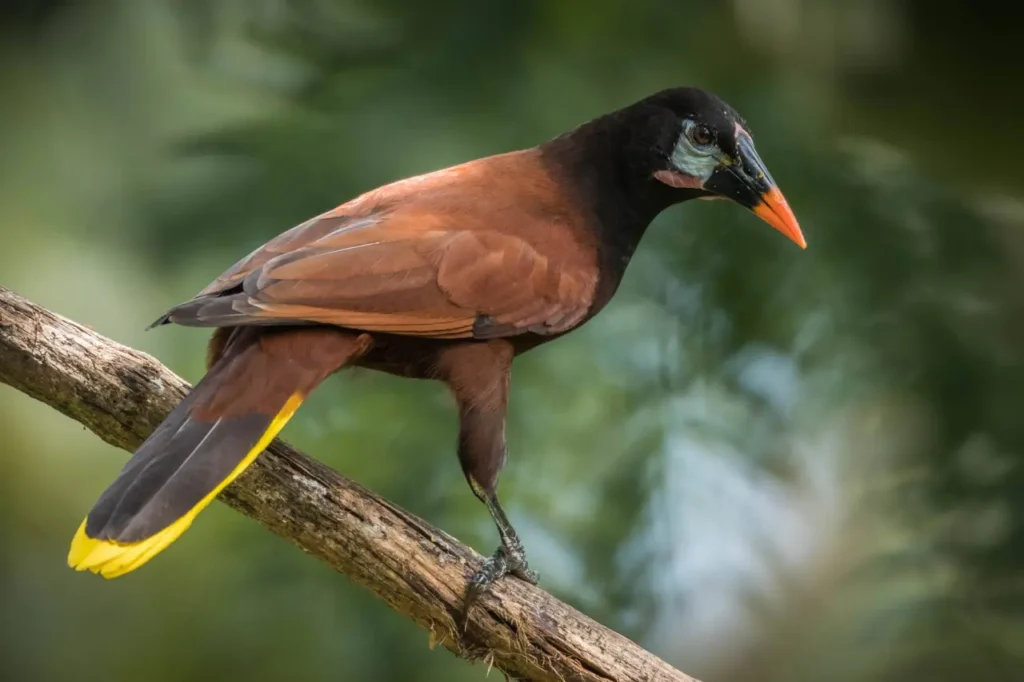
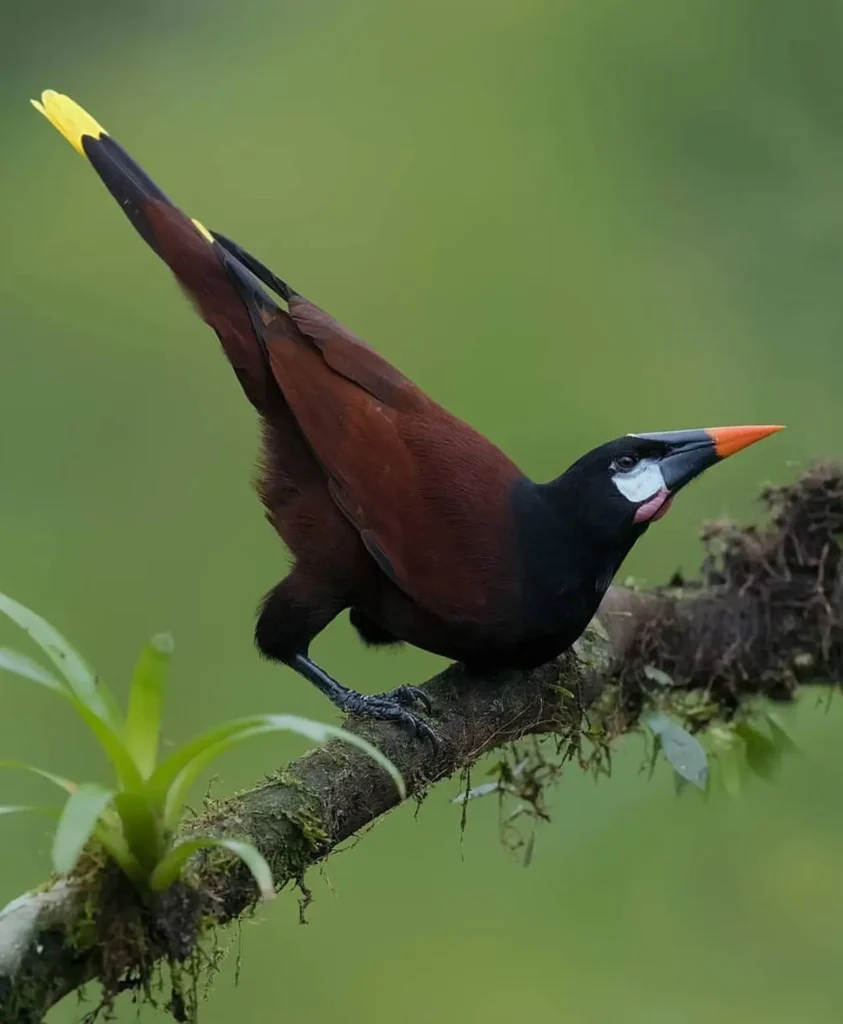
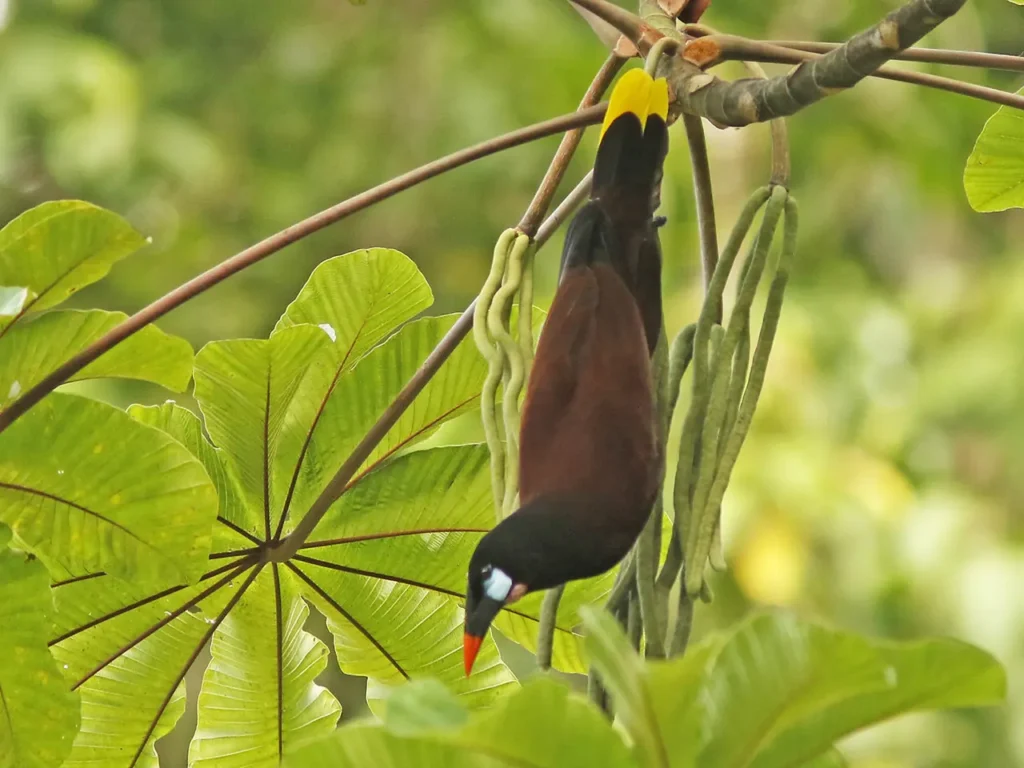
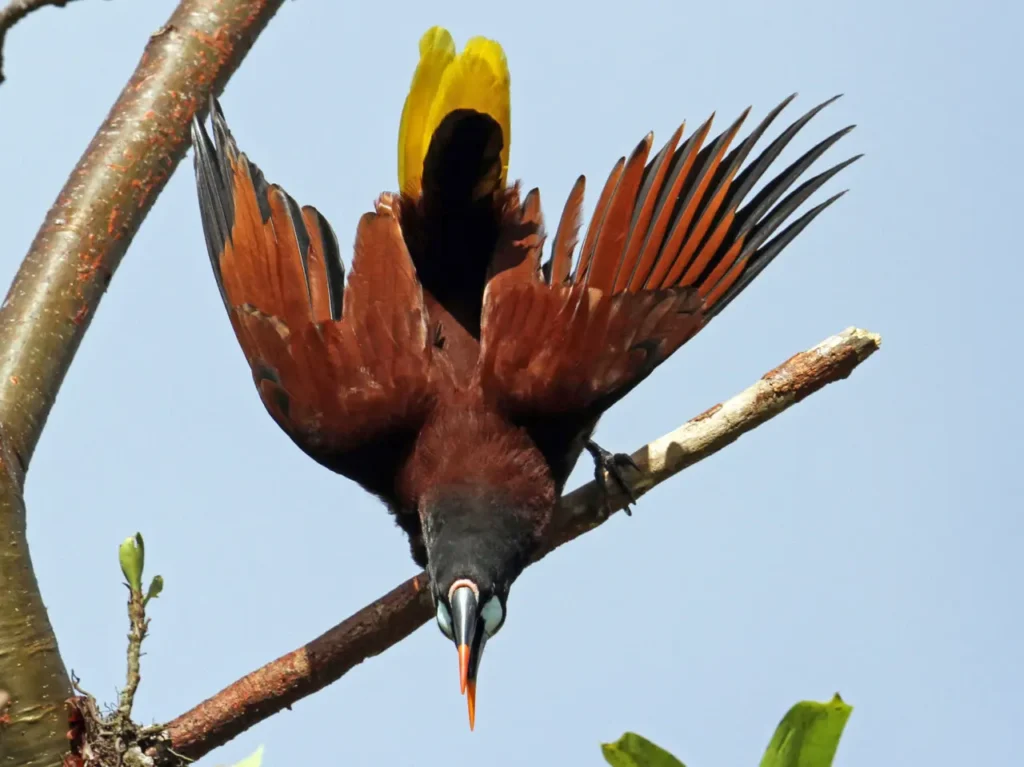
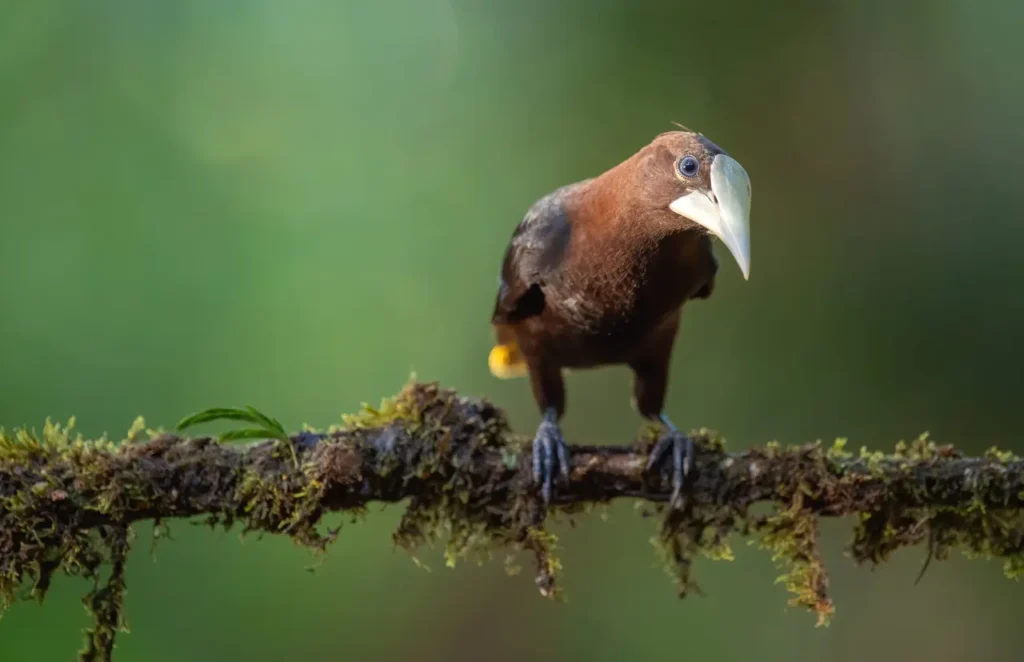
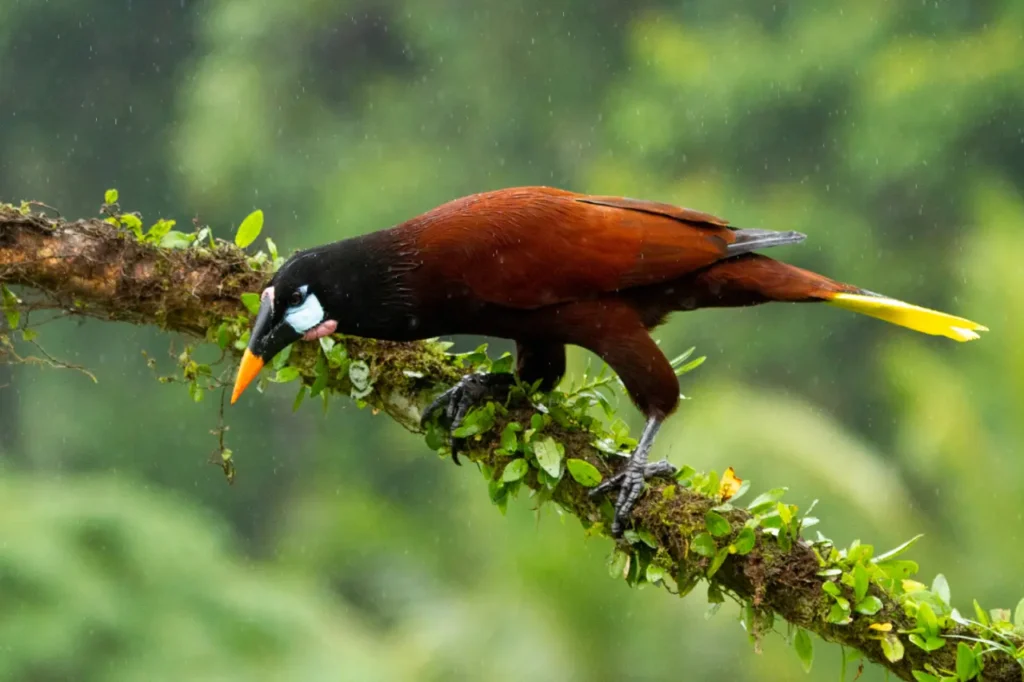
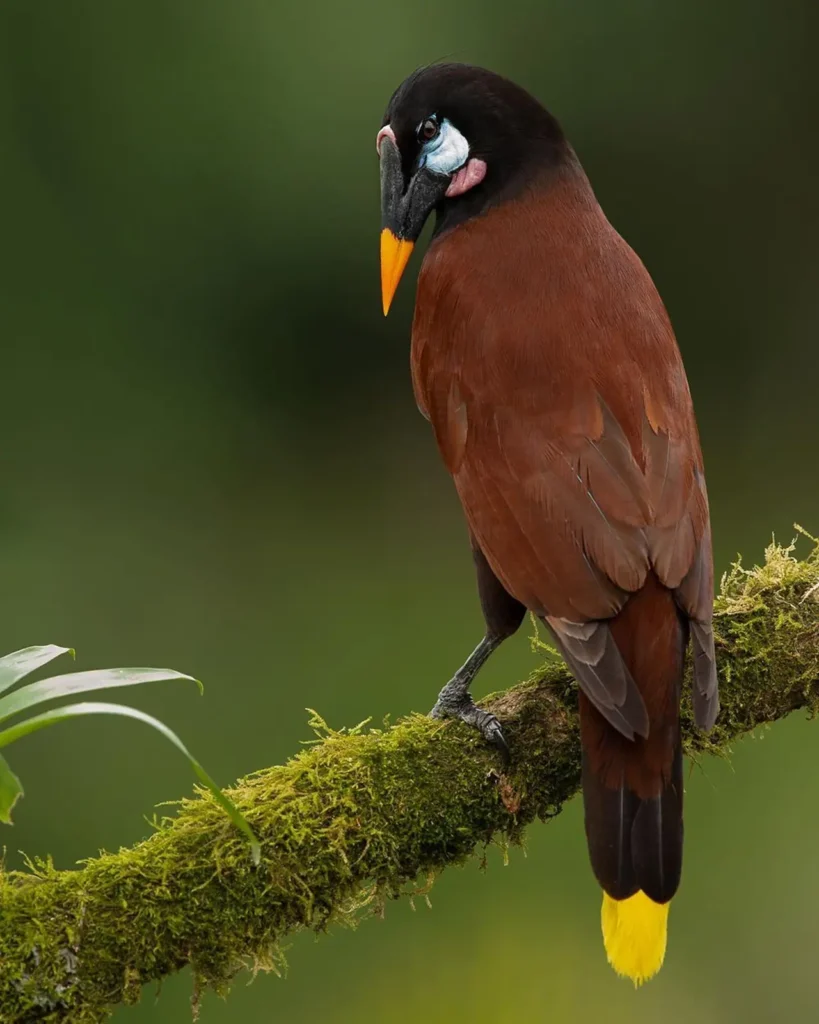
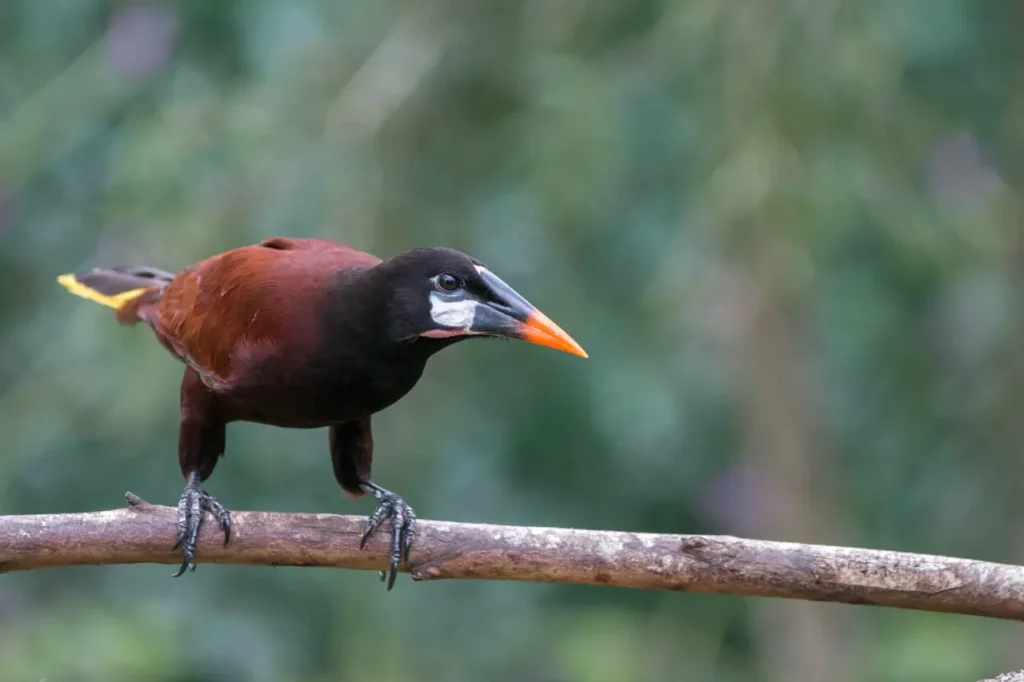
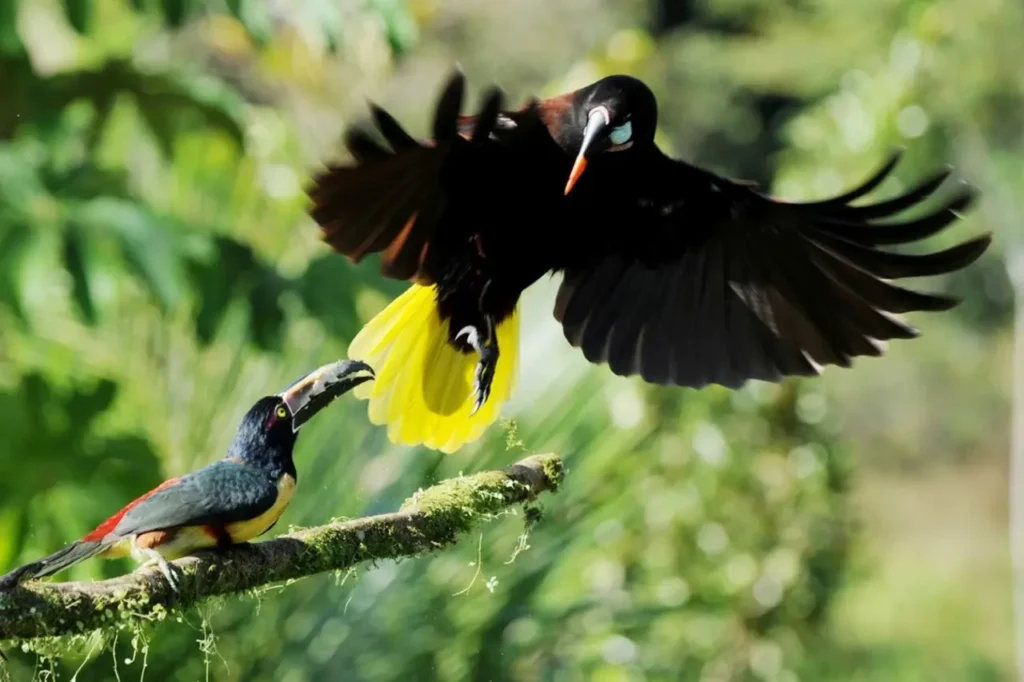
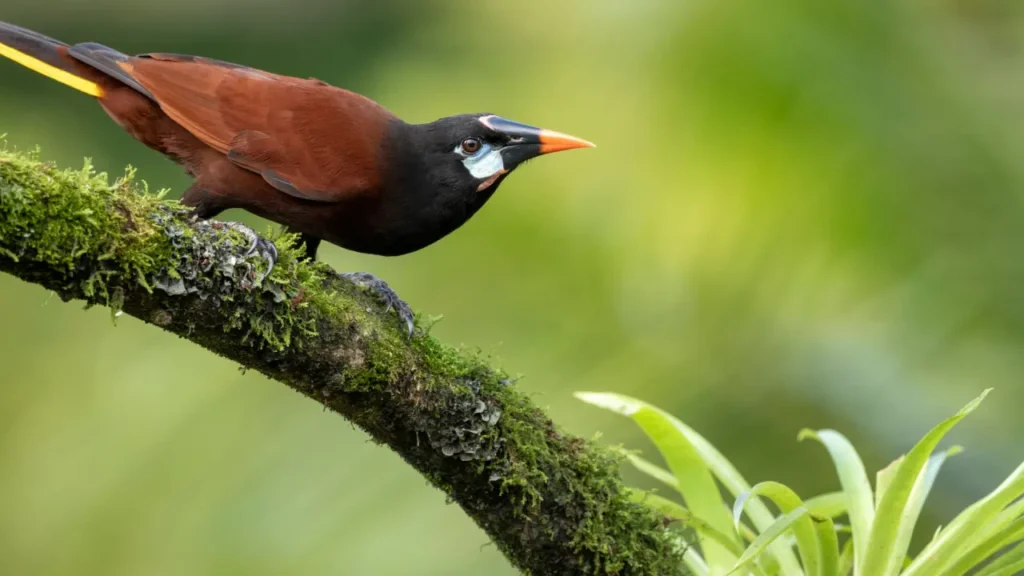
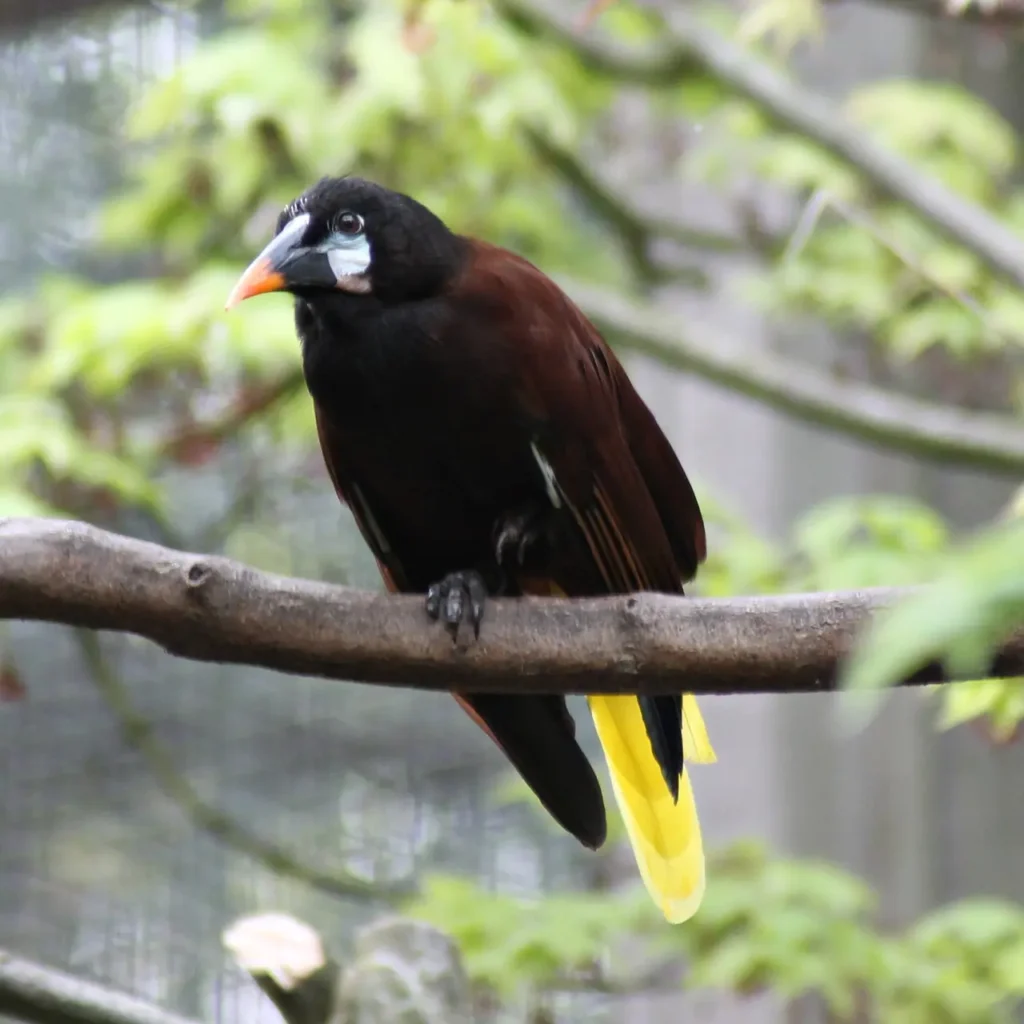
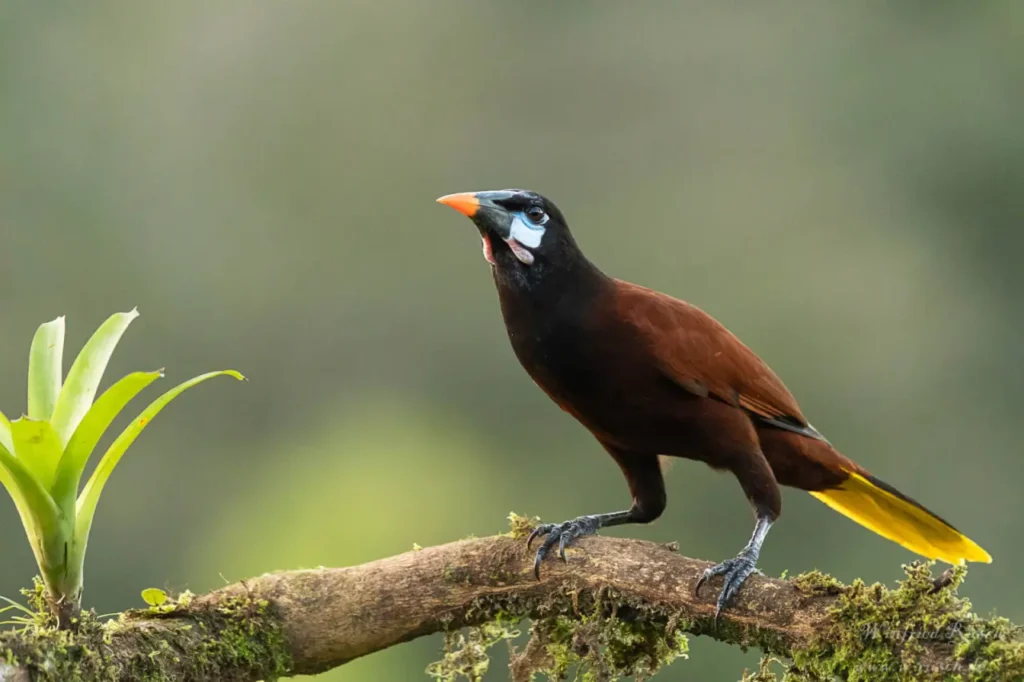
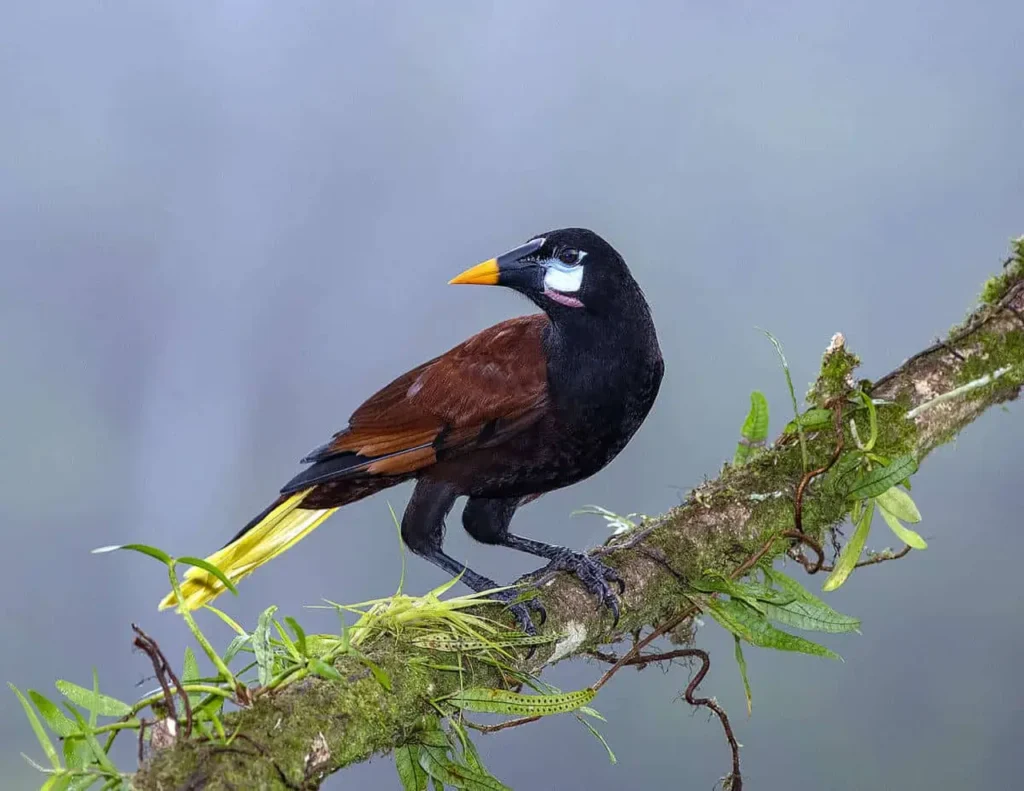
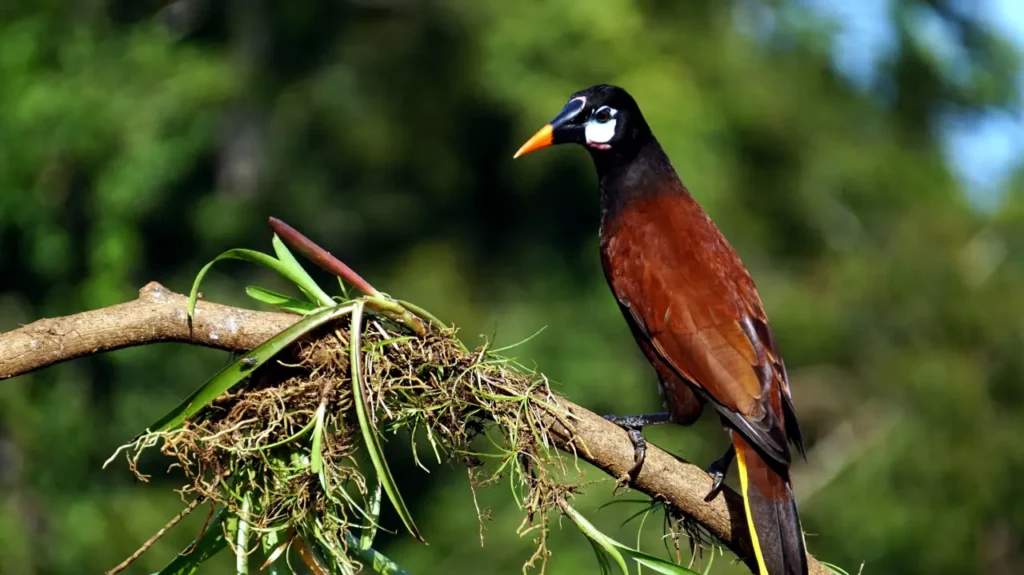
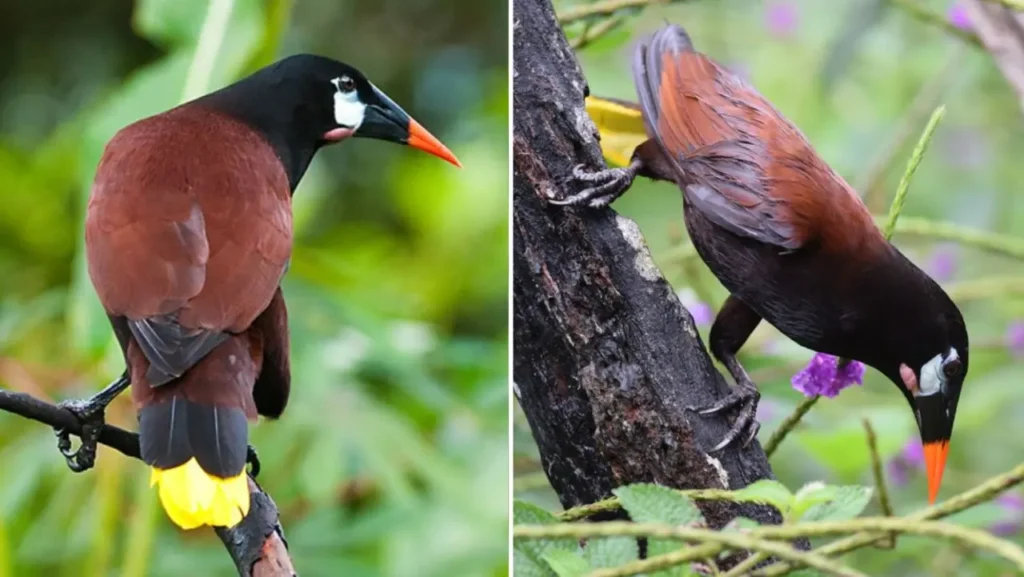
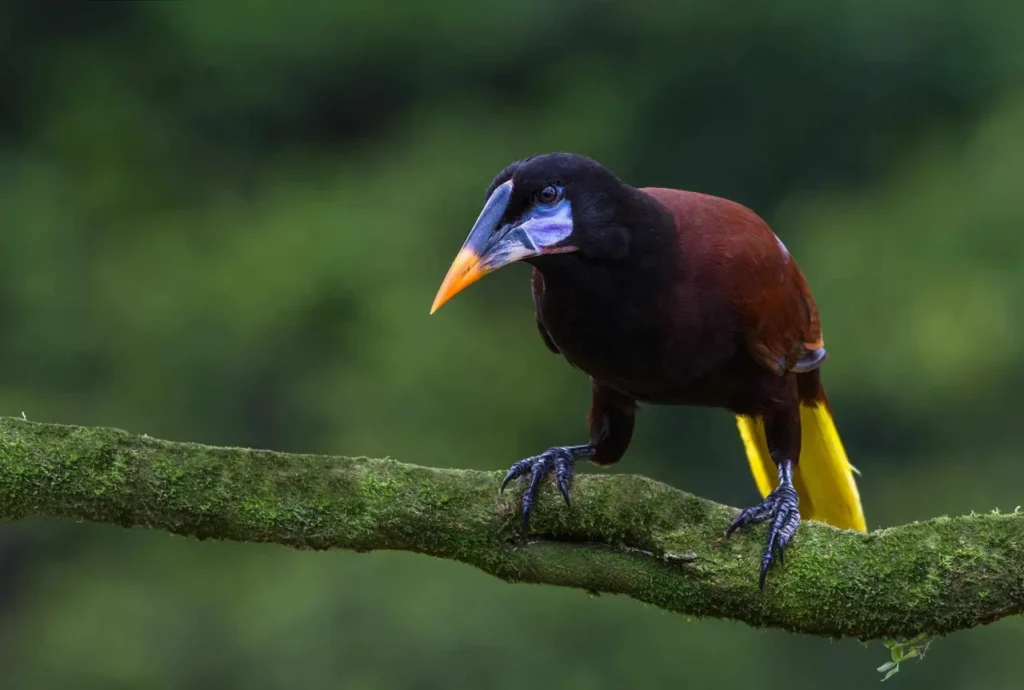
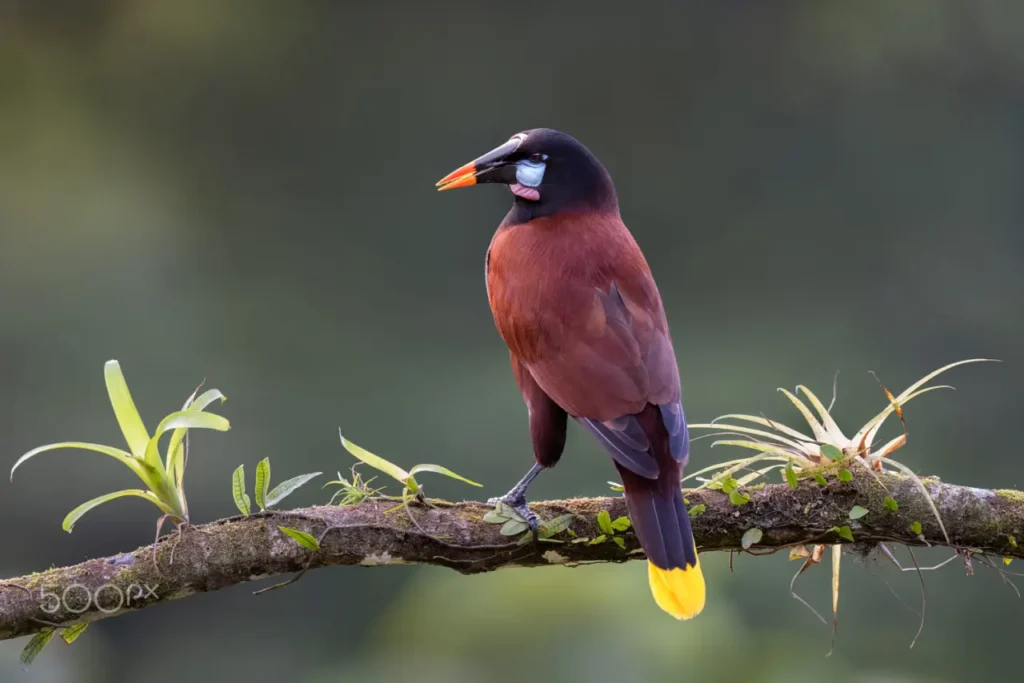
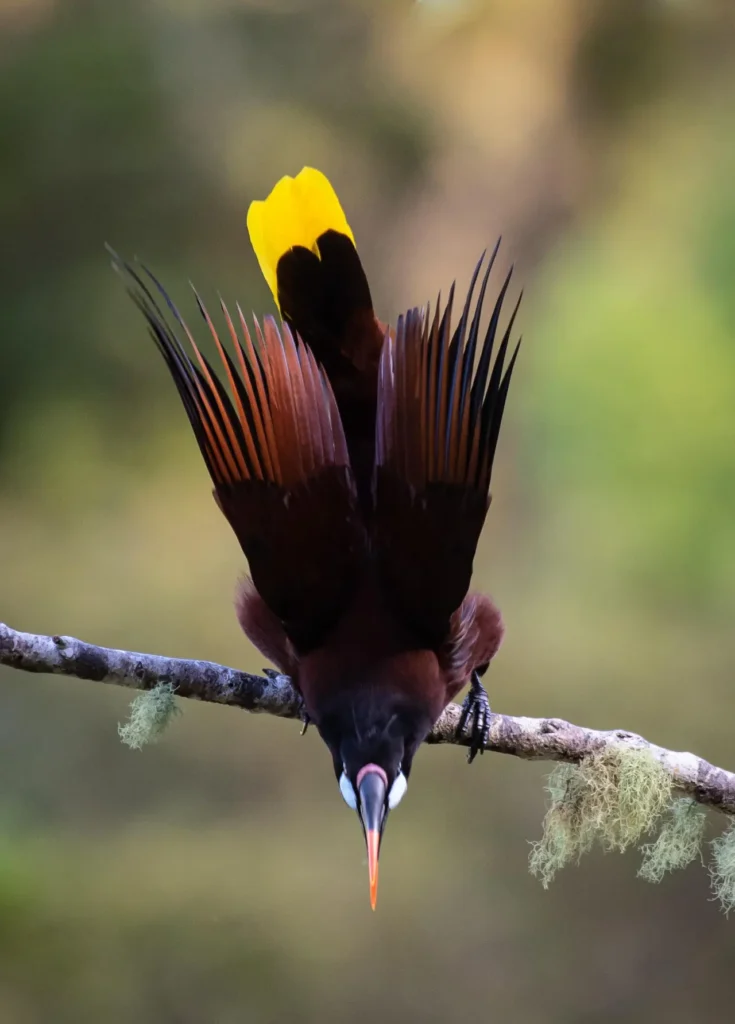
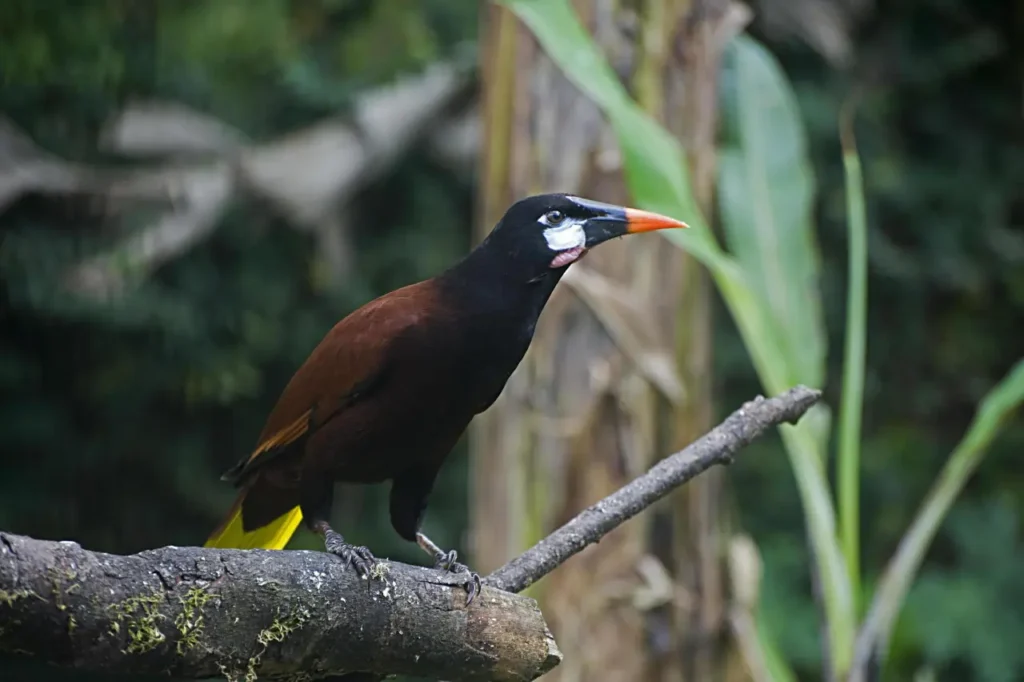
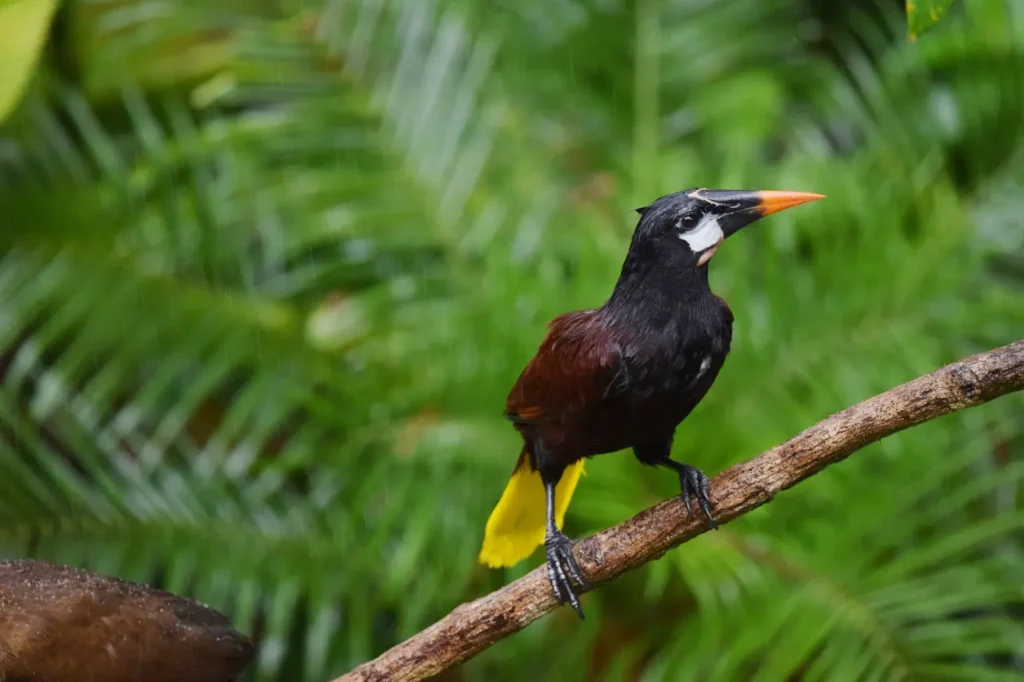
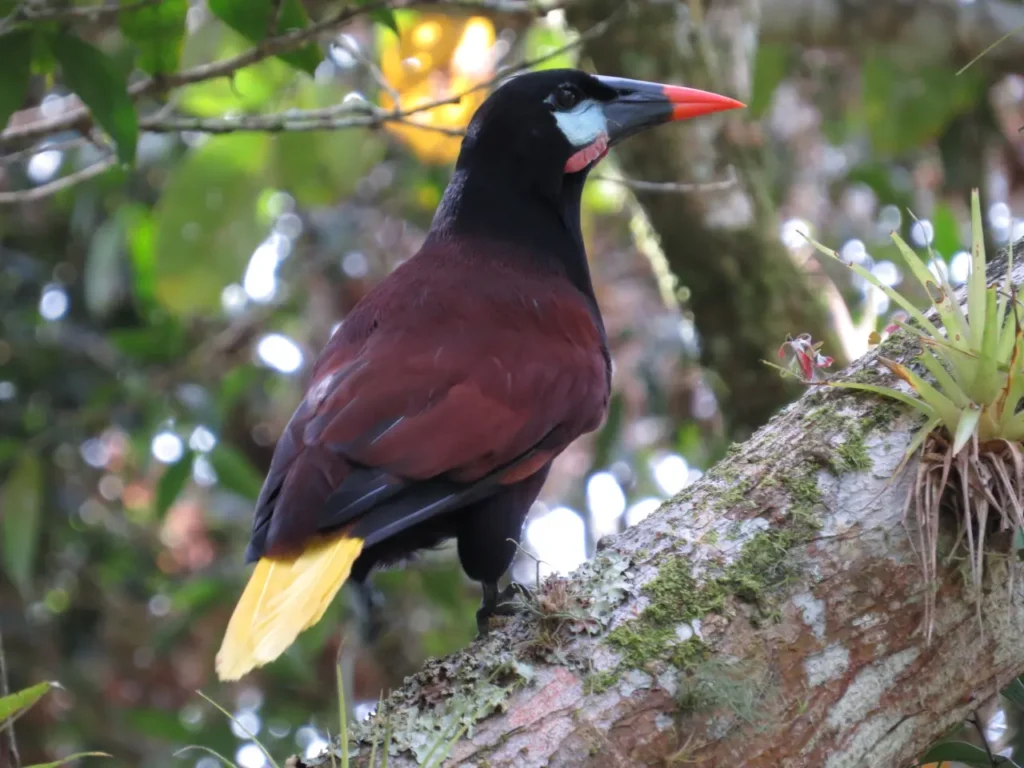
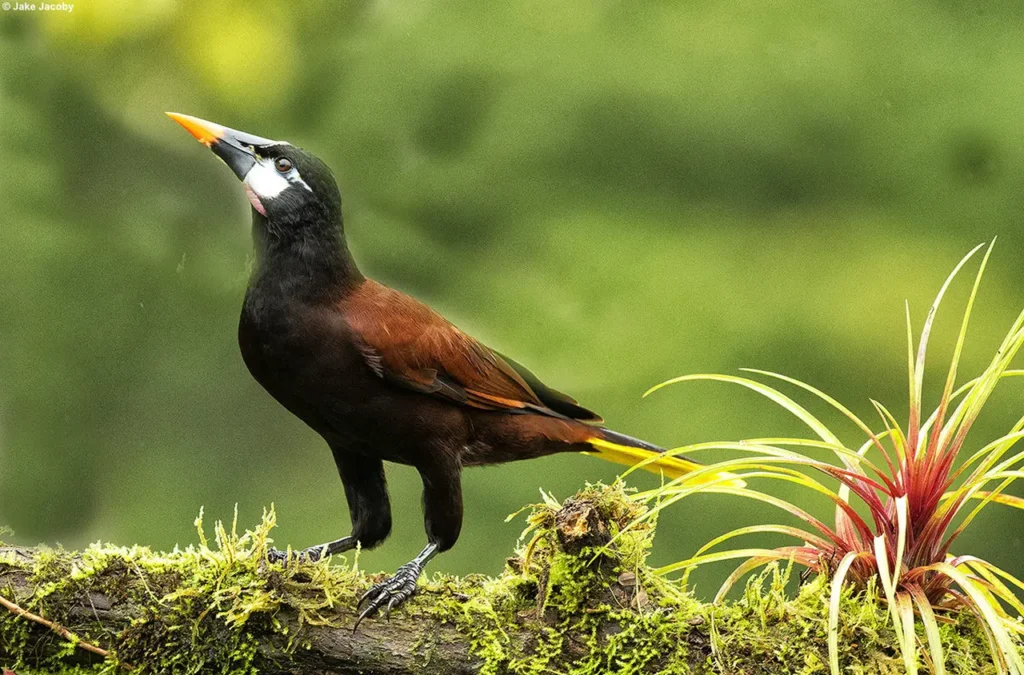
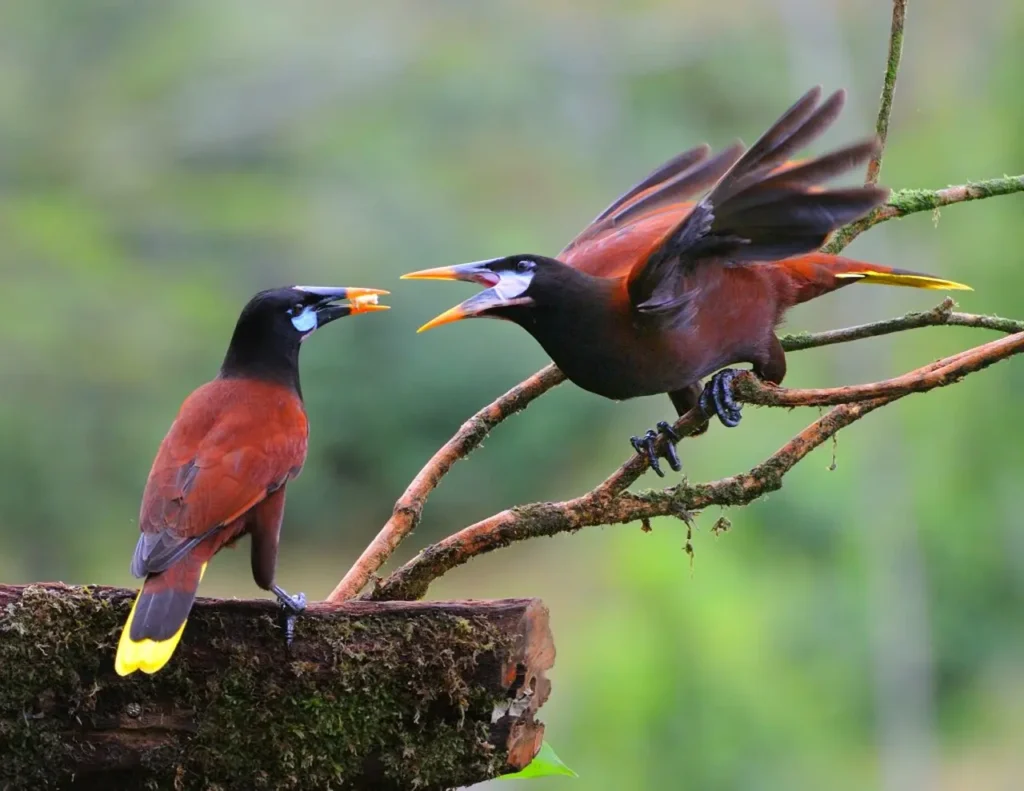
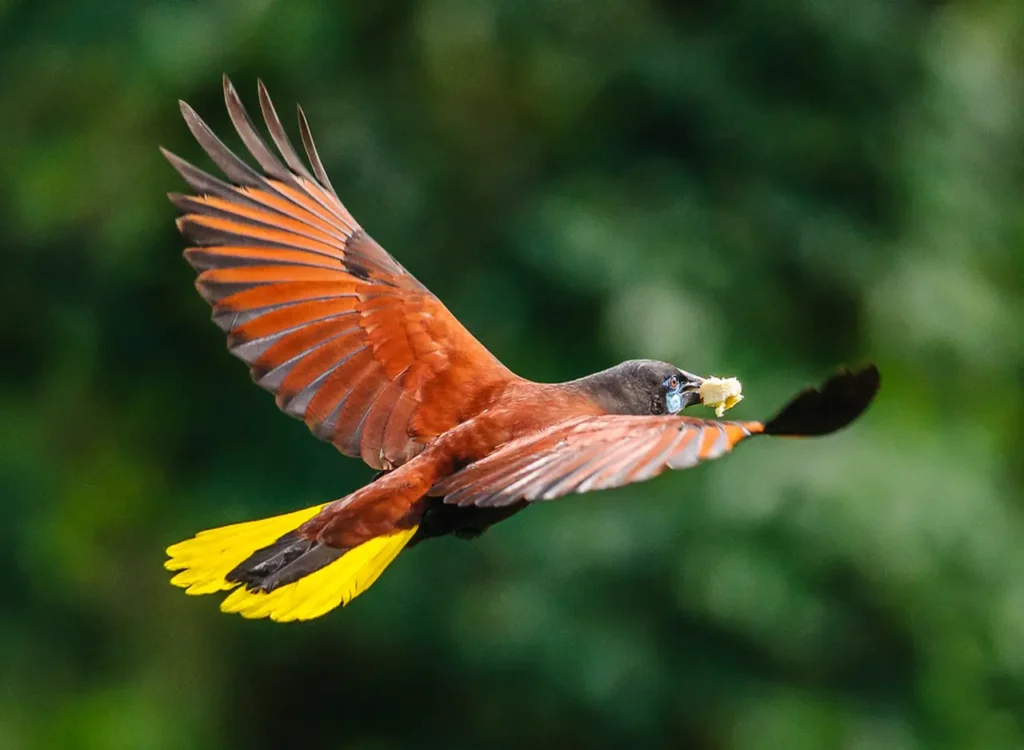
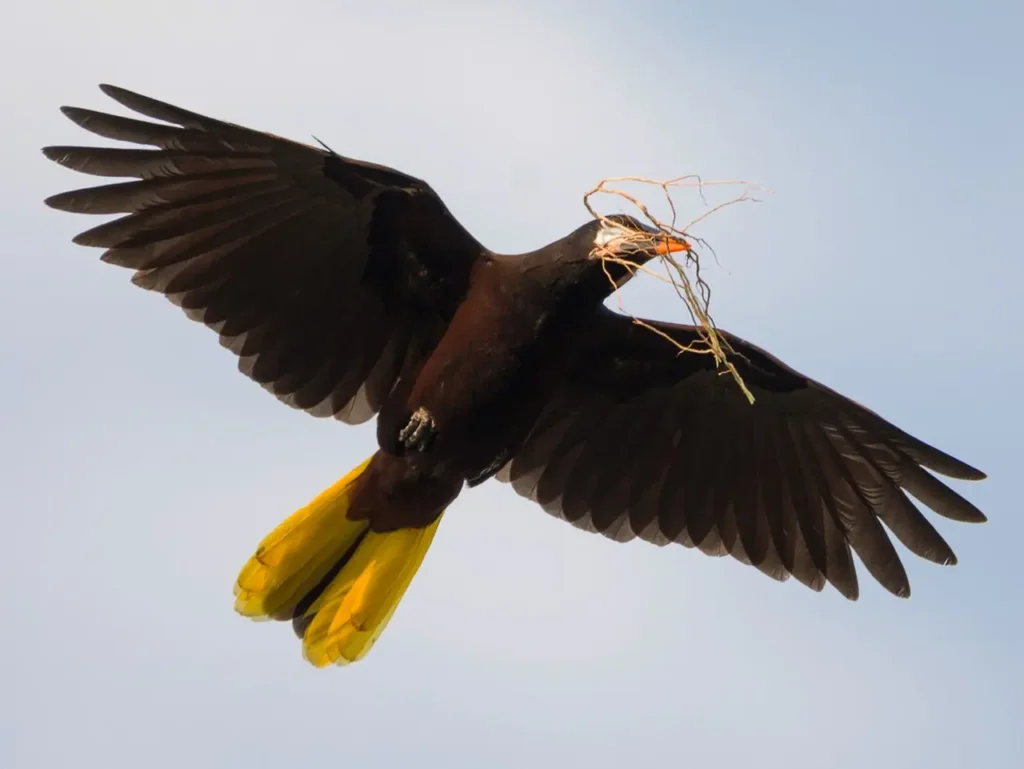
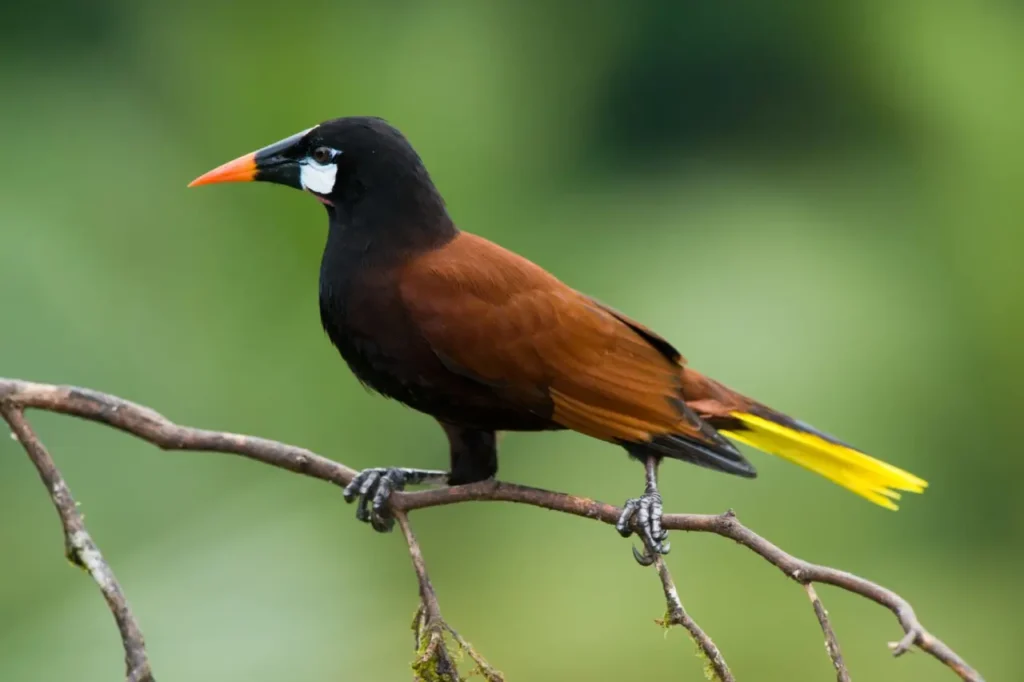
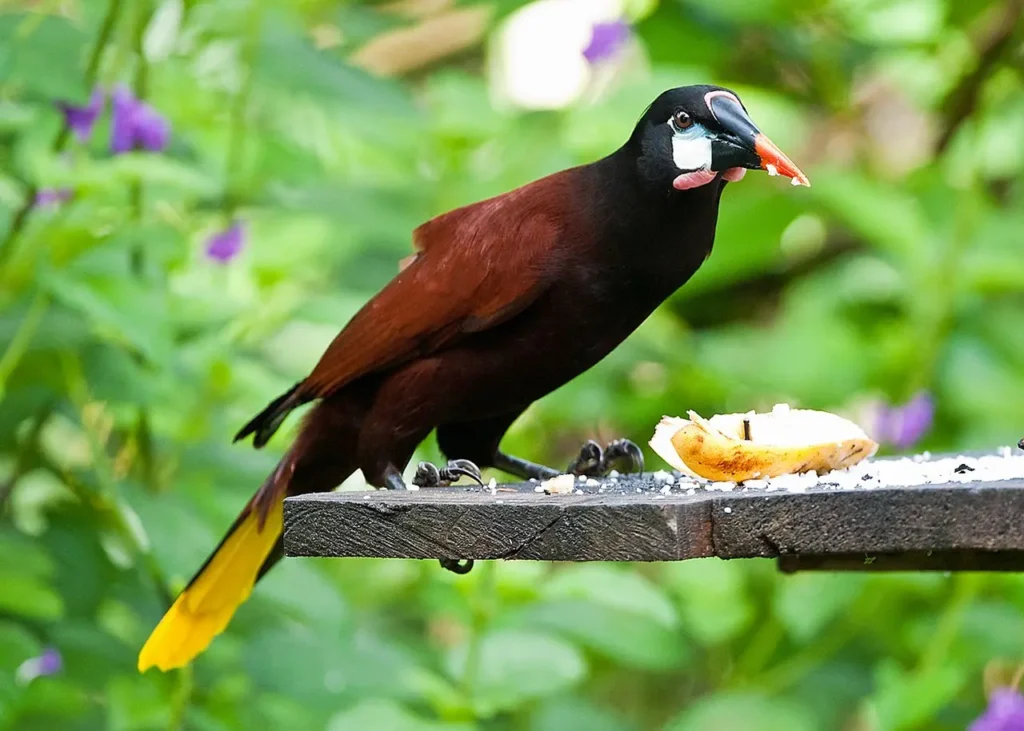
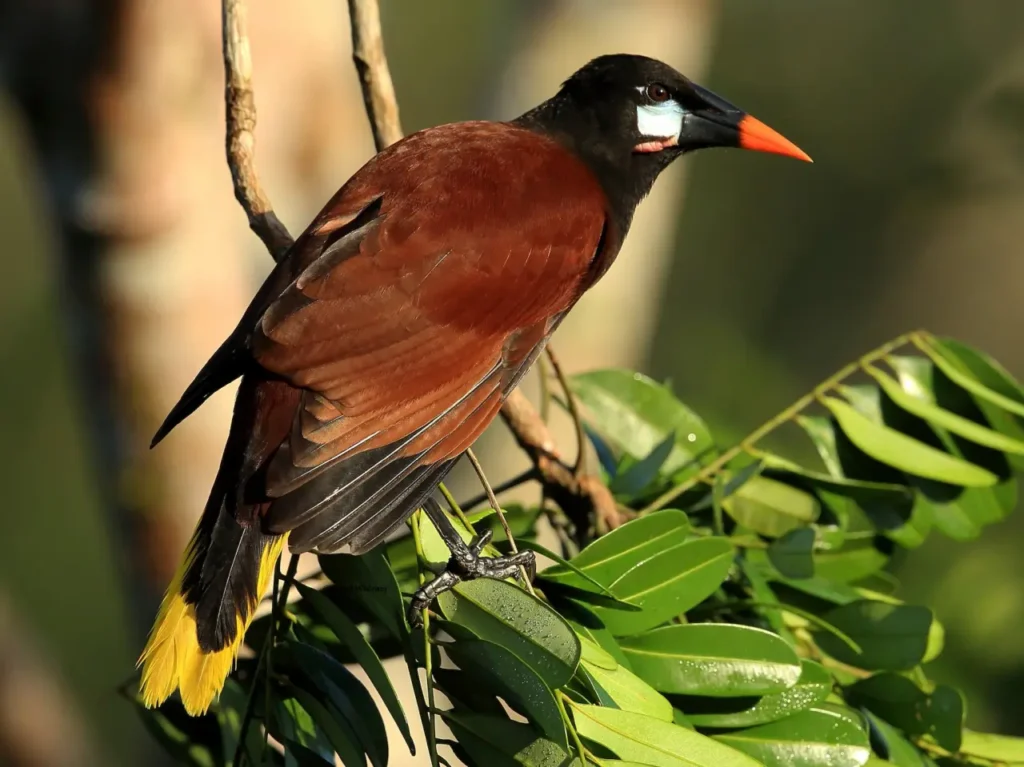
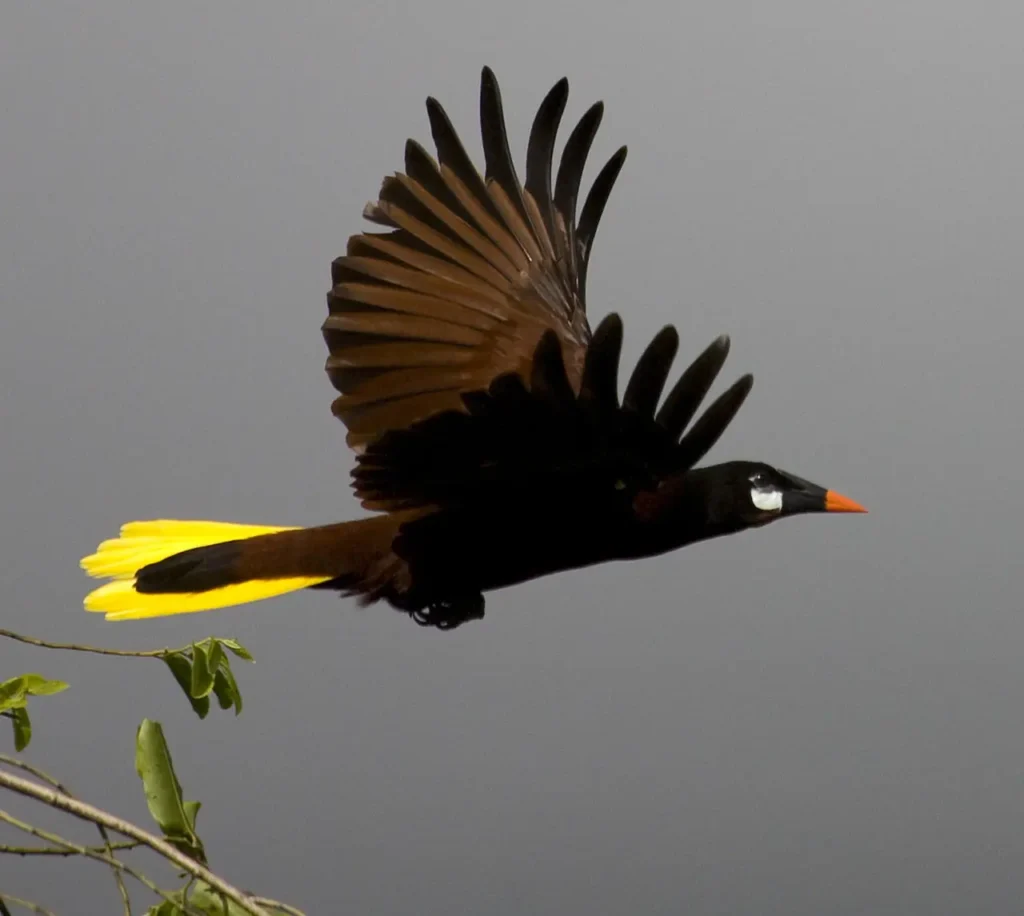
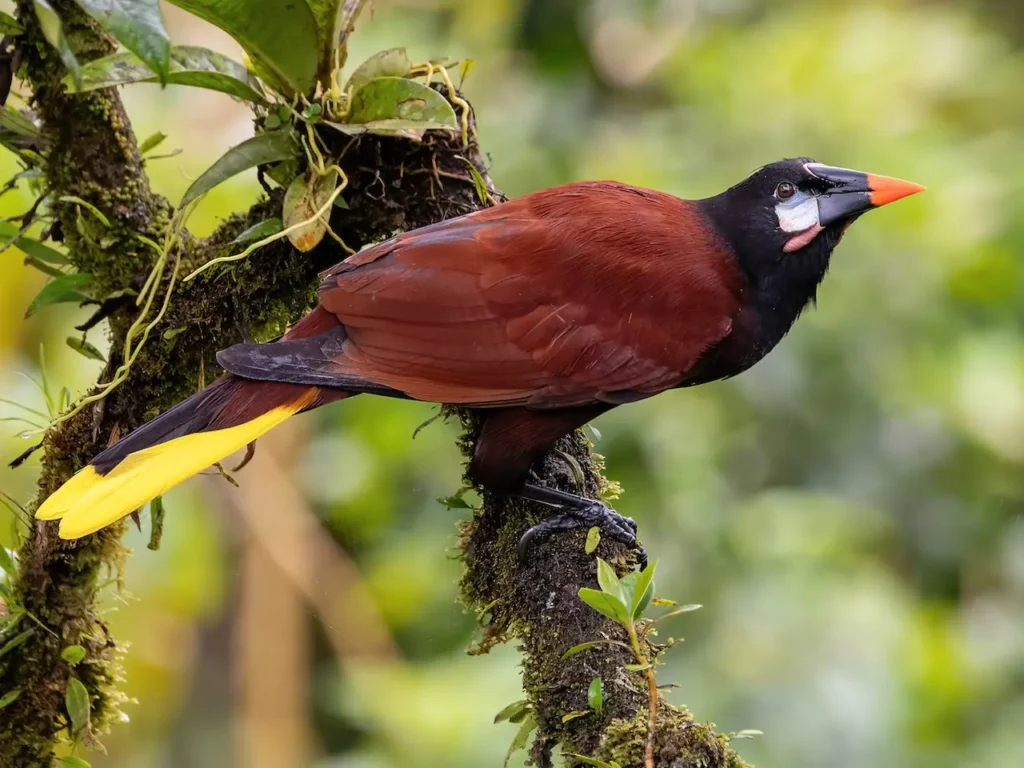
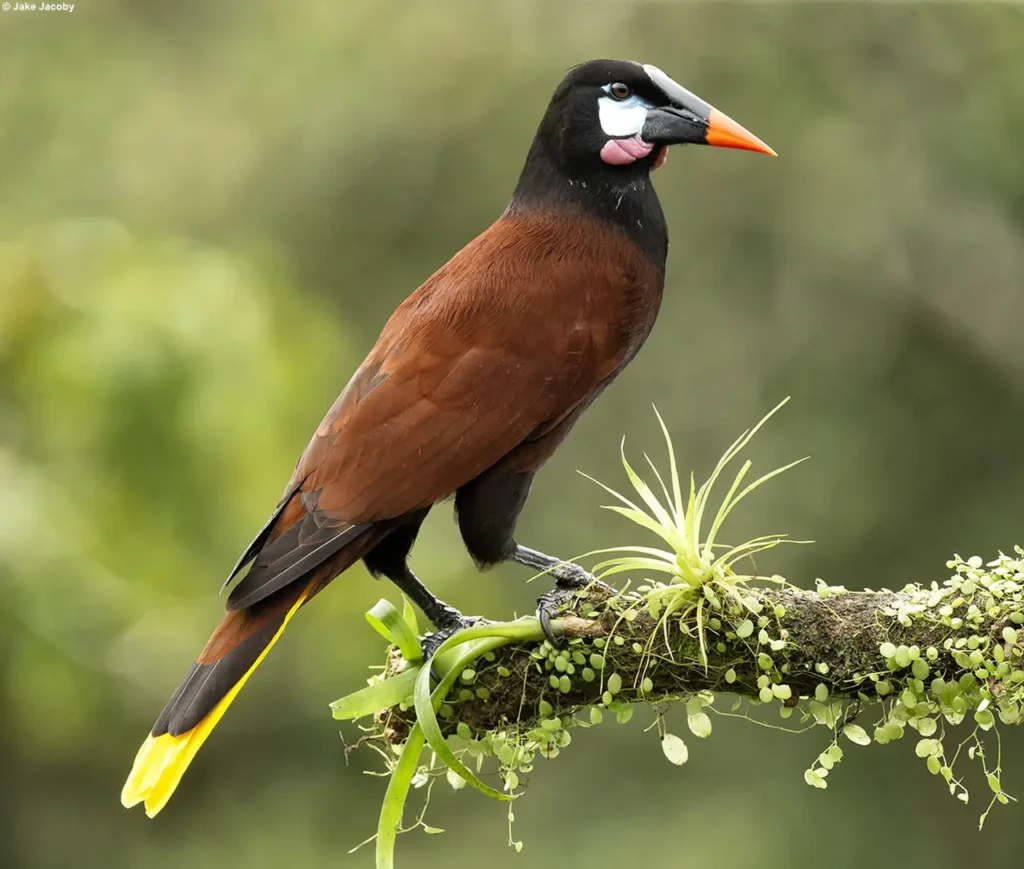
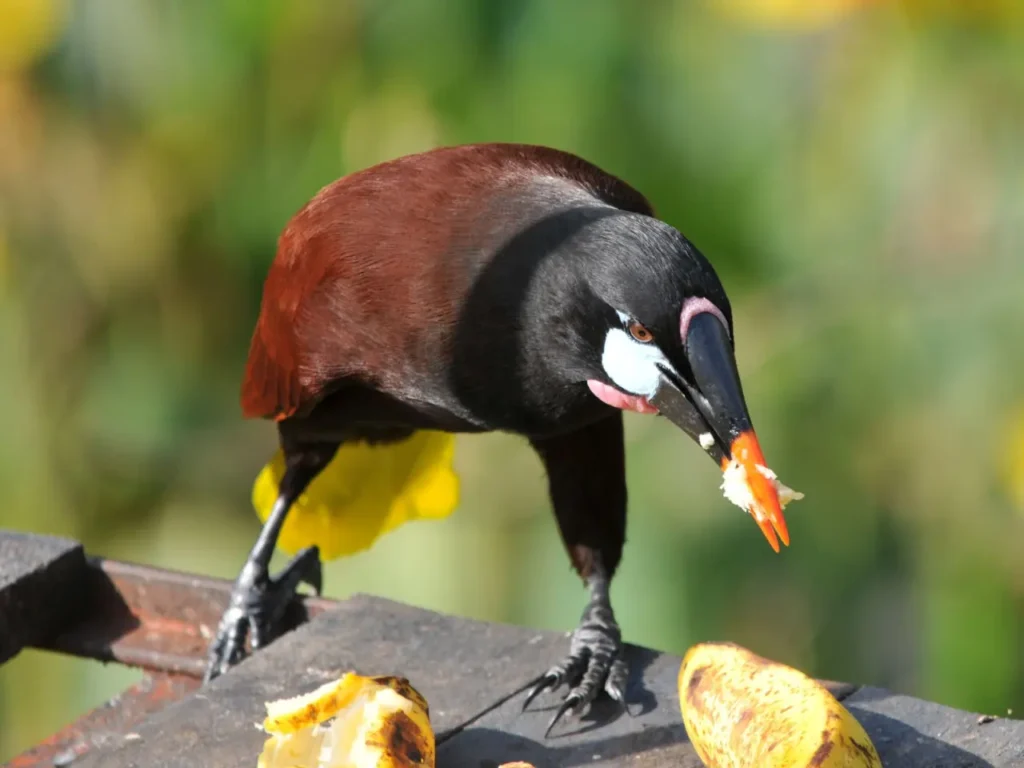
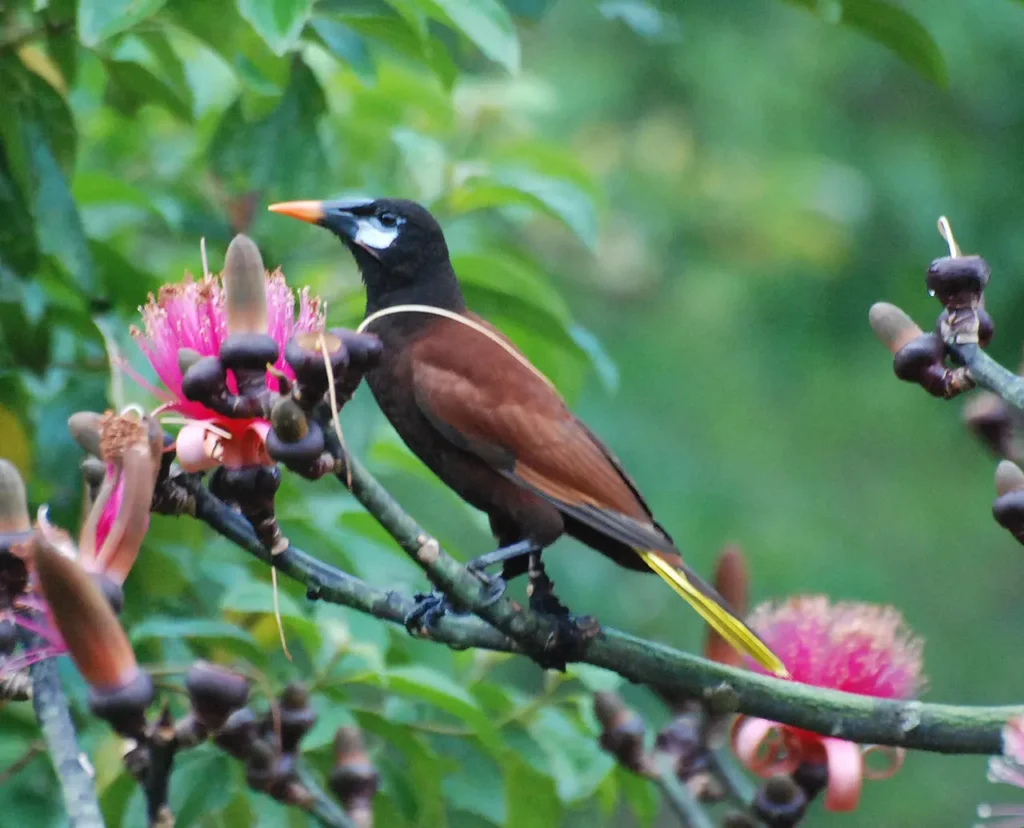
Appearance and Plumage
The Montezuma Oropendola is a large bird, measuring around 50 centimeters in length. Males exhibit a striking appearance, with glossy black feathers and long, slender tails. Their most distinctive feature is a bright yellow or orange tail tuft, which contrasts magnificently against the dark plumage. Females, on the other hand, have more subdued colors, with brownish-black feathers and a shorter tail.
Elaborate Nests and Colony Behavior
One of the most remarkable features of the Montezuma Oropendola is its unique nesting behavior. These birds build large, pendant-shaped nests, often hanging from the branches of tall trees in the rainforest canopy. These nests can reach impressive lengths of up to one meter and are constructed from woven plant fibers, creating a safe and sturdy structure for nesting.
The Montezuma Oropendola is a highly social bird, often found nesting in colonies that can comprise dozens or even hundreds of individuals. These colonies provide protection against predators and facilitate cooperative behaviors such as nest defense and predator alarms. The collective sound of their calls and display of their nests create a vibrant and bustling atmosphere in the rainforest canopy.
Vocalizations and Courtship Displays
The Montezuma Oropendola is known for its distinct vocalizations, which are a symphony of deep, resonating calls. Males produce a variety of sounds, including long, gurgling calls and metallic, popping notes. These vocalizations serve multiple purposes, such as establishing territory, attracting females, and maintaining social bonds within the colony.
During courtship, males perform elaborate displays to woo potential mates. These displays involve puffing up their plumage, swinging and swaying on branches, and producing loud calls. The males’ vibrant appearance and captivating performances are essential in attracting female attention and securing breeding opportunities.
Ecological Significance
The Montezuma Oropendola plays a vital role in the rainforest ecosystem. As fruit-eating birds, they consume a variety of fruits and play a crucial role in seed dispersal. By ingesting fruits and later depositing the seeds through their feces, they contribute to the regrowth and diversity of plant species across the rainforest.
Conservation and Threats
While the Montezuma Oropendola is not currently considered threatened, the destruction of its rainforest habitat poses a significant risk to its long-term survival. Deforestation, habitat fragmentation, and human activities disrupt their nesting and foraging areas. Conservation efforts should focus on preserving and restoring the rainforest habitat, implementing sustainable land-use practices, and raising awareness about the importance of these unique avian species.
The Montezuma Oropendola, with its striking appearance, elaborate nests, and captivating behaviors, adds a touch of magic to the rainforest canopy. Its presence and ecological role remind us of the intricate web of life within these biodiverse habitats. By appreciating and conserving the habitats that support the Montezuma Oropendola and other rainforest species, we contribute to the preservation of nature’s wonders for generations to come.
